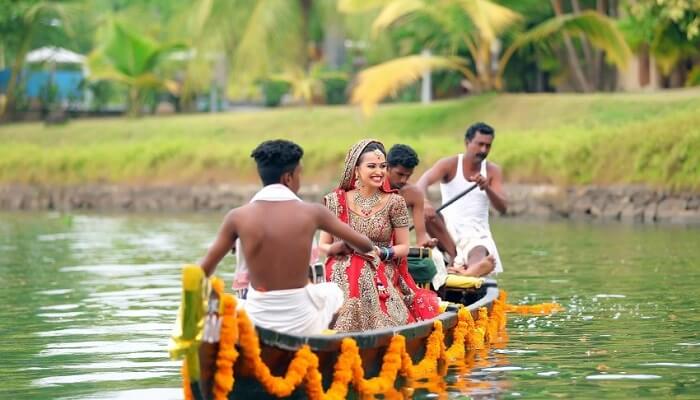A traditional Hindu wedding is very elaborate and follows many traditions and rituals, which are very symbolic and crucial to the matrimonial ceremony. Whether it is a Kannada vivaah, Bengali matrimonial or Gujarati Vivaah or any other typically regional wedding, there are several compulsory rituals in a Hindu wedding. These rituals hold immense significance and deep-rooted meaning in society. The rituals of the Hindu wedding ceremony typically start much before, sometimes several days prior to the actual wedding ceremony. The very typically Indian idea of ‘marriage as a gift’ is very unusual and practice followed in India alone. While a Hindu matrimonial is religious and steeped in tradition, the concepts of ‘Kanyadaan’, makes the ceremony quite emotional too. During this ritual, a father hands over all his rights and duties towards his daughter to her groom.
On the wedding day, the entire matrimonial ceremony last lasts for several hours due to many small as well as big customs that are considered auspicious while being vital for solemnizing holy matrimony. Among all the important rituals performed during a wedding, kanyadaan is the most vital and significant ritual. Kanya Daan literary means gifting away a virgin girl; the word is actually a compound of two separate words – ‘kanya’ and ‘daan’. Kanya translates as a virgin daughter and Daan denotes donation.
The ritual of Kanya Daan is performed right before the phere or the seven rounds around the sacred fire. Kanyadaan is a ritual in which the bride’s father entrusts her daughter to the groom, who is considered to be a form of Lord Vishnu, at the time of marriage. As a pre-condition for gifting (read offering) his daughter to the groom for marriage, the bride’s father asks the groom to promise that he would assist the bride in achieving three important goals of the life – dharma, artha, and kama. To convey his humble acceptance, the groom touches the right shoulder of the bride, to signify his promise of taking care of her and shouldering her responsibility for life.
The ritual of Kanya Daan is considered to be a very pious, auspicious and dutiful ritual which is said to bestow good fortune as well as atonement from the sins committed for the bride’s parents. It is considered to be a path to attain moksha or salvation.
In the ritual of kanyadaan, irrespective of a Punjabi matrimonial or a Bengali wedding or a Marathi vivaah, the bride’s parents, usually her father or in his absence an elderly male relative ‘give’ custody of their daughter to the groom by putting the bride’s right hand into the groom’s right hand. This sub-ritual is referred to as Hastamilap, which literally means joining of hands. This entire process happens while priests recite sacred verses. In a Marathi vivaah, the curtain separating the bride and groom is then removed and then the couple exchange flower garlands. When the father of the bride gives away his daughter to the groom, along with several other gifts and presents, the priests presiding over the ceremony or the elders of the family place an auspicious white cotton thread encircling the couple’s shoulder’s to protect them from evil omens. Then, the bride and the groom shower each other with rice. This ritual is a symbol of couple’s bond and love during the matrimonial alliance. The groom holds the bride’s hand and the newly married couple takes vows to love, be loyal, care for, committed to and protect each other throughout their life.
In dominant Hindu religion, according to the holy text “The Laws of Manu”, “one of the ten paths to reach moksha or enlightenment in Hinduism is kanyadana, the act of giving a virgin bride to the groom along with financial and/or other gifts that are known as dakhshina or dowry”. Thus in any Indian matrimonial, the ritual of Kanyadaan is of supreme significance.



